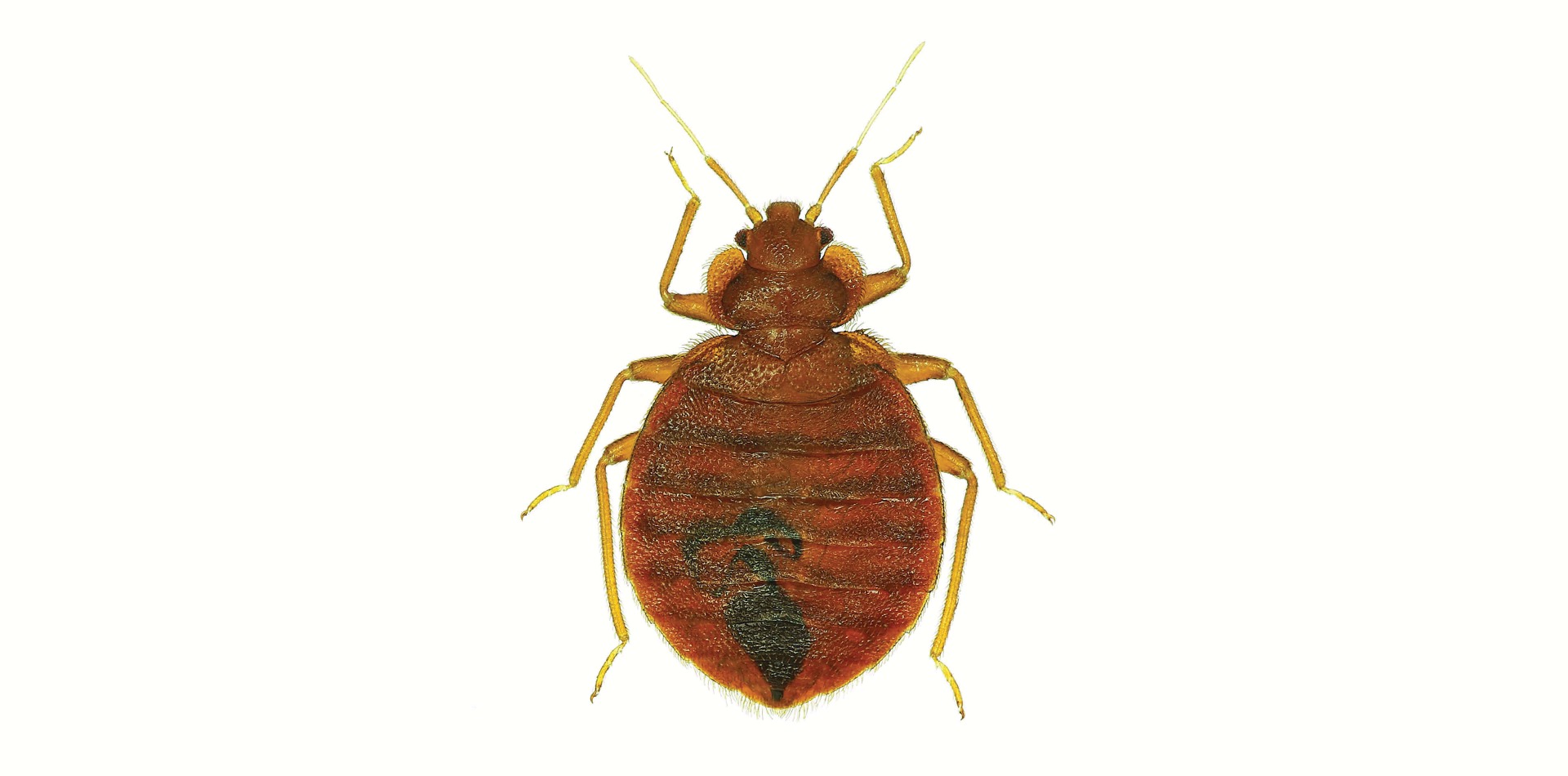Bed Bug
(Cimex lectularius)
Bed bugs are a major pest throughout the world. They are a nocturnal parasite and feed on mammalian blood, principally human. However, they also feed on dogs, cats and rodents. Whilst the bed bug is not known to be a disease vector, their bites can cause irritation and skin rashes.
Life cycle:
Eggs, nymph, adult
| Egg | Eggs are laid at a rate of 4-5 per day; a female can lay up to 200 eggs. In order for the eggs to hatch, temperatures must remain above 13°C. They appear as a white egg with a darker coloured cap. |
| Nymph | The nymph has 5 moults before maturing to the adult phase. This process can vary in time from several weeks to several months, depending on the temperature and food availability. |
| Adult | The adult bed bug is around 6 mm in length and appears as a flat oval shape. It is red-brown coloured until fed. Once feeding occurs, the body will swell and change to a darker red-brown colour. The adult can go without food for up to one year and can withstand low temperatures. |
Habitat
Though found throughout the world, the bed bug is more commonly found in heavily populated areas and places such as hotels, where the frequent change of visitors increases the likelihood of bed bugs being carried into a property. Usual harbourages include, bed frames, mattress seams, soft furnishings such as curtains, behind wallpaper, under carpets, in furniture and any other cracks and crevices that offer safe shelter.




